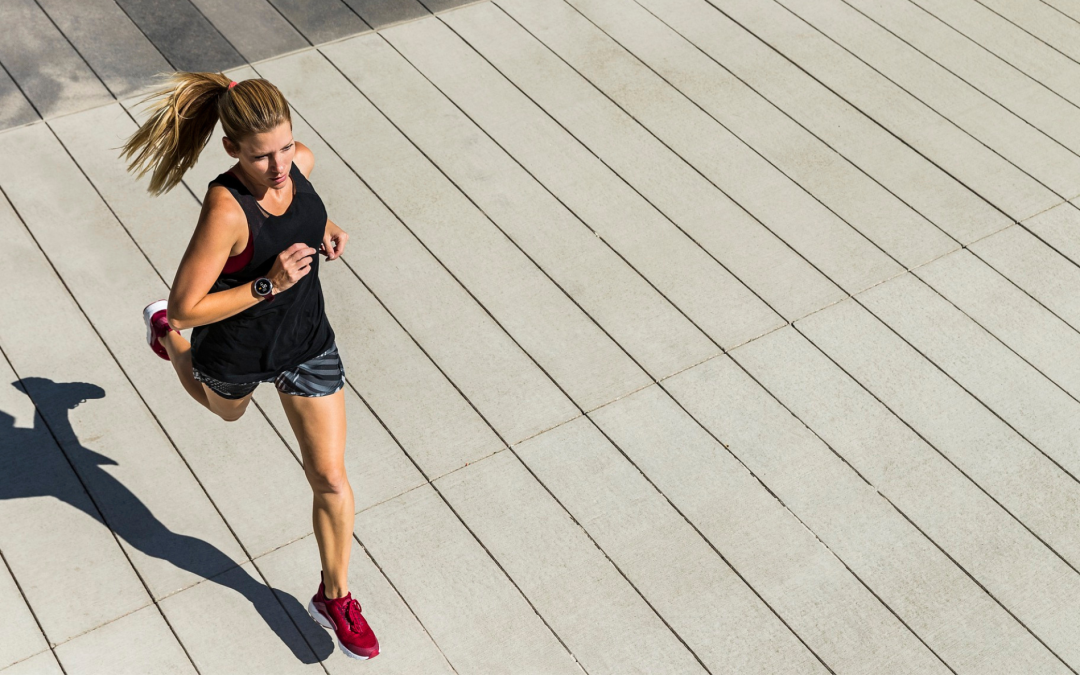Now that you are motivated enough to follow a discipline of running, there are some basic instructions that must be followed by a new runner. One of the good things about running is that it can be started anytime anywhere without much equipment. You just need a pair of running shoes and a firm resolve. Sometimes, one spends a lot of time in assuring himself that he is ready to run and as he starts running he faces certain things that he is not ready for because he himself is not sure about the steps to follow as a beginner. Also, it is assumed that one is physically fit for the said task. Now, let us see some basic instructions related to running for beginners:

1) Start with brisk walking: If you have been following a sedentary lifestyle for a while, start by brisk walking, for a week or two, so as to accustom you body and muscles to workout. You may continue this for as long as you are comfortable or as your body responds. Brisk walking for about 30 minutes is sufficient.
2) Gently add running: After a week or two, or as your body responds, start running slowly and gently without putting much pressure on body parts like knees, ankles, shin bone, thighs, etc. In the beginning, running for about 1 minute is enough. You may also add intermittent running in brisk walking. You may also run for 2-3 minutes or more if you feel comfortable and your body permits. Continue this routine for few weeks.
3) Increase your running time: After a few weeks, now that you are comfortable with running, you need to gradually increase the time of run. No matter how slow or fast you run, just try to increase the time of running. It may take time and effort, but as you persevere, your time of running will gradually but surely increase over the next few weeks.
4) Try to increase speed: Now that you have increased your running time to about 10 minutes or may be even more than that, it’s time to increase your speed. But remember, this should happen gradually. Do not try to double your speed at once. Start picking up pace and build up your mileage.
Apart from the above mentioned instructions, you should also find a pair of running shoes that is comfortable enough to not hurt the feet. One that allows the toes to move freely without being constricted within. One that absorbs the shock of the thrust of foot. Also wearing comfortable clothes is extremely important since running cause huge sweating. Therefore, it is important to wear clothes that helps is regulating temperature levels. Along with this, staying hydrated is yet another important point one should follow to compensate for the water lost in running.
Frequently Asked Questions(FAQs)

How fast should I run as a beginner?
As a beginner, you should find out a pace that is comfortable for you. Specifically, there is a term called ‘conversational pace’ which means a pace where you can have a conversation with your running partner or with yourself if you are running alone. To maintain this you can mix walking with running intermittently. Gradually, you can increase the pace without being uncomfortable.
Should I warm up before running?
Of course, you should. Warming up is extremely important because it not only prepares your body for workout but also increases circulation, loosens muscles slightly, wakes up your body and increases oxygen supply to tissues. General stretching, jumping jacks, high knees, butt kicking, leg swings, etc. are excellent warm-up exercises.
What should be my breathing pattern while running?
Correct breathing pattern is important while you run because not only it improves your efficiency and performance but also your degree of comfort. There are various forms of breathing styles, some of which are discussed below :
a) Rhythmic Breathing – Here you need to coordinate your breath with the thrust of feet. Some patterns are:-
- 2:1 pattern: Inhaling for two steps and exhaling for one step.
- 2:2 pattern: Inhale for two thrusts and exhale for next two thrusts.
- 3:1 pattern: Inhale for three steps and exhale for one step quickly.
b) Nose and mouth breathing – Some runners breathe through nose while others breathe through mouth. Some even breathe through nose and mouth combined. You can find out by trying all which one is more comfortable for you.
What should be my position of arms , feet and other body parts?
Proper form is essential for an efficient running. It is also important to avoid fatigue and injury. Here are some tips regarding position of body parts :
- Head: Head should be held straight, looking approximately 5-6 metres ahead. Looking down should be avoided to prevent any strain in neck or adjoining areas.
- Arms: Elbow should be bent by about 90 degrees and should be relaxed naturally. Swing your arms naturally from shoulders and avoid crossing the centre line of your body. The arms should move from hips to chest level.
- Feet: Land near midfoot which is directly underneath the body. Avoid landing on heels to avoid any injury.
- Torso: While you run, try to keep the spine straight for most of the time. Avoid bending of spine and chest caved-in, which my lead to less oxygen supply and other kinds of strains.
How should I cool down after finishing my run?
In order to bring your heart rate back to normal gradually, cooling down is essential. Avoid stopping suddenly after run. Instead, slow down gradually with intermittent quick short runs combined with walking, jumping jacks, lunges,etc. followed by stretches to avoid any stiffening.
What’s the best time to run?
Although there are some night runners also present in the world, we restrict out running timings to morning, afternoon and evening. Let’s have a look.
- Morning Runs :It is the easiest one to follow consistently because interruptions are negligible and morning temperature is quite favourable. But sometimes stiff muscles in the mornings can be a trouble. For people who go to bed late night, sleep deprivation could be an issue.
- Afternoon Runs :Since bodily engine is already running, the performance can be much better while running in the afternoon. Moreover, body is fuelled with meals, energy levels are generally higher. But maintaining consistency is quite difficult because of workplace, family and other commitments. Also, heat during the afternoons especially in summers could be an obstacle.
- Evening Runs :After a busy day, evening run can be quite relaxing. Energy levels are generally higher just like afternoon runs. Muscles are generally flexible and performance is quite well. Both mental and physical fatigue after the day’s work can be a demotivating factor. Apart from this, sometimes evening runs may lead to sleep deprivation in some individuals.
Therefore, it is entirely up to you to decide when to run. You can try all three schedules for few days and find out which schedule is more comfortable to you.
How often should I run?
This entirely depends upon your goals, fitness levels, health conditions and how your body responds to running. For example, as a beginner, running 3-4 times a week is sufficient because this allows your body to adapt to stress levels and avoid injuries. Running alternate days can provide adequate rest and recovery time.
For intermediate level runners, about 4-5 times a week is sufficient since the body is adapted to increased stress levels.
For advanced runners, 5-6 times a week is enough because they focus on specific running plans which may include different types of running schedules.
Therefore, you can start with the beginners’ plan and gradually increase the frequency with time.


